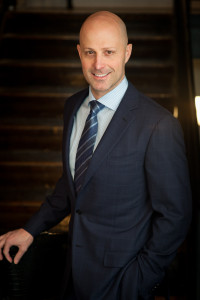Robert Giustra's Columbus Gold is unlike other junior gold plays.
For one, it's headquartered in trendy Yaletown, away from the downtown Vancouver core favoured by most junior mining firms.
For another, it's advancing a gold project through a bankable feasibility study, with another party paying the bills. Columbus's Paul Isnard gold project in French Guiana is funded by Russia-based Nordgold, which can earn a 50.01% interest by spending a minimum US$30 million and producing a BFS by Q1 2017.
The Montagne D'Or deposit at Paul Isnard contains in-pit resources of 3.9M oz indicated and 1.1M oz inferred. A PEA released in July showed positive economics at US$1,200 gold, including an after-tax IRR of 23%, capex of US$366 million and all-in sustaining costs of $711/oz over a 13-year mine life.
Company shares have held up better than the vast majority of other junior miners listed on the Venture; they're down about 16% in the past year (compared to a 43% TSXV decline). Columbus has about 142 million shares out and a share price of 38 cents, for a market cap of about $54 million.
Columbus's other main property is the Eastside gold project in Nevada, and drill results announced last week gave an indication of the property's potential.
Significant intercepts included:
- 152 m of 0.71 g/t Au, including 28.9m of 2.16 g/t Au;
- 24.4m of 2.7 g/t;
- 27.4m of 2.54 g/t Au and 36.5 g/t Ag.
I talked to Giustra, chairman and CEO, about the results in a phone interview, and he was encouraged but said further drilling will be required. That's because there is high-grade mineralization but it lies below a lower-grade zone on the 59-square-km property. Forty-six of 51 holes hit gold mineralization and 17 of those bottomed in gold.
"The results were successful in demonstrating there's shallow gold," he said. "Unfortunately it's not the high-grade zones that come to surface, it's the lower-grade gold that comes to surface. There are very thick zones of gold mineralization and we don't know how thick it is, b/c we get assays back and they bottom in gold."
Nevada is elephant country for gold, and the elephant hunters are on Giustra's team. Columbus Gold president Andy Wallace is the principal of Cordex, the mine-finding group that found the 4-million-ounce Carlin mine as well as several other multi-million-oz gold discoveries. Cordex operates exclusively for Columbus Gold.
Eastside has great infrastructure: Power lines run right through the property and the paved highway between Reno and Las Vegas is 10 km to the south. There is also a shallow aquifer so water should be less of a problem than at other Nevada operations.
Early metallurgical tests show good potential for a heap-leach operation.
"In terms of infrastructure, it's a dream location to find a gold mine," Giustra said.
Round Mountain, one of the largest heap-leach operations in the world, is located about 30 km away. In the last 30 years, more than 12 million ounces have been pulled out of the mine, which is 50% owned by Kinross and Barrick.
However, the next drill program will have to go deeper than the RC drills Columbus has been using - better grades start between 100 and 200 metres - and that means raising more money.
In that respect, Columbus is in a similar position as other juniors.
The company had $4.9 million as of June 30 but the treasury is down to about $1.4 million after an aggressive drill program at Eastside.
But don't hold your breath for a discount financing with warrants.
"I can tell you I'm very anti-dilution," Giustra told me. In 2013, Columbus sold a 1% NSR on the Paul Isnard project to Sandstorm Gold for US$5 million.
He's been travelling to Toronto and New York for meetings on financing alternatives. Depending on how those go, drills could be turning again with regular news flow coming out of Eastside.
In the meantime, there are 2 drills turning at Paul Isnard, where Nordgold spent $11.8 million last year and will spend a further $10 million this year, Giustra said. The company pays Columbus a management fee as the operator.
Nordgold has grown rapidly, primarily through acquisition, and produces about 1 million oz from 9 operating mines in Burkina Faso, Guinea, Russia and Kazakhstan.























